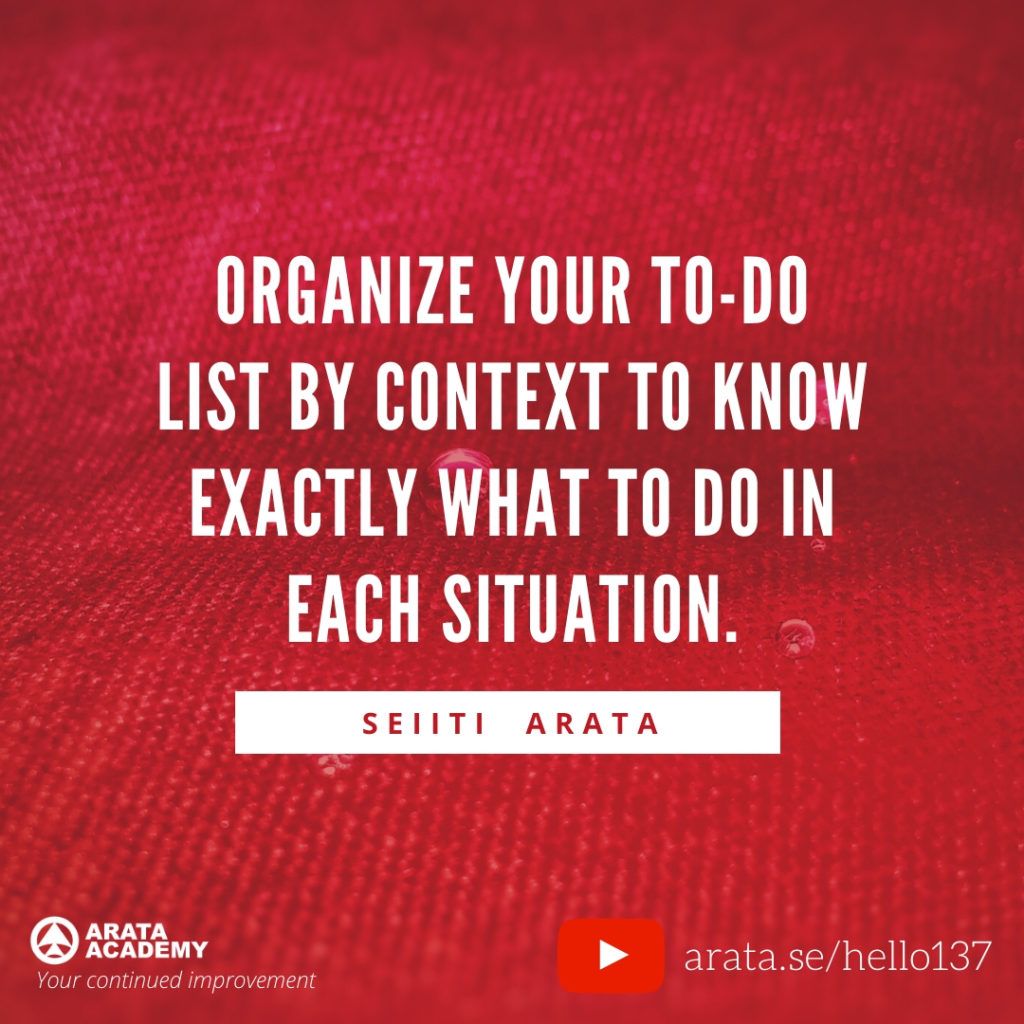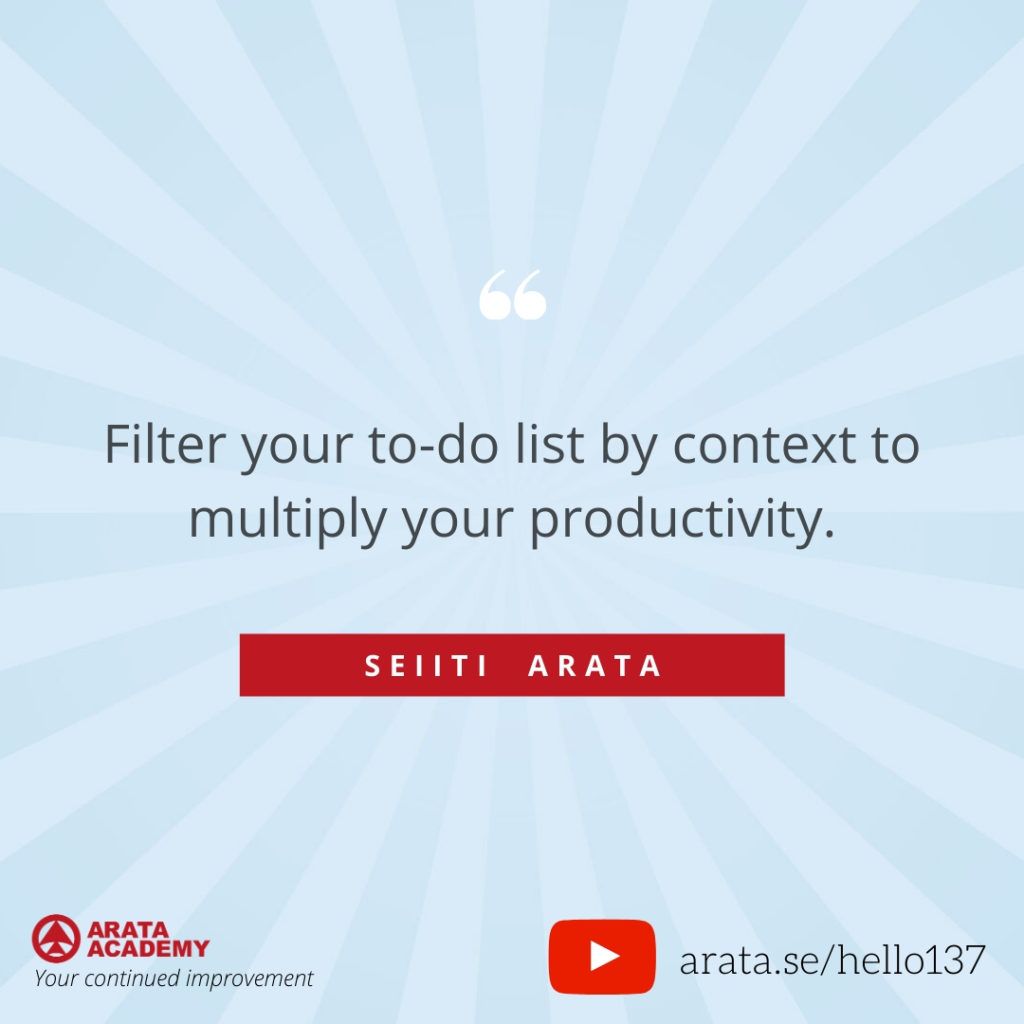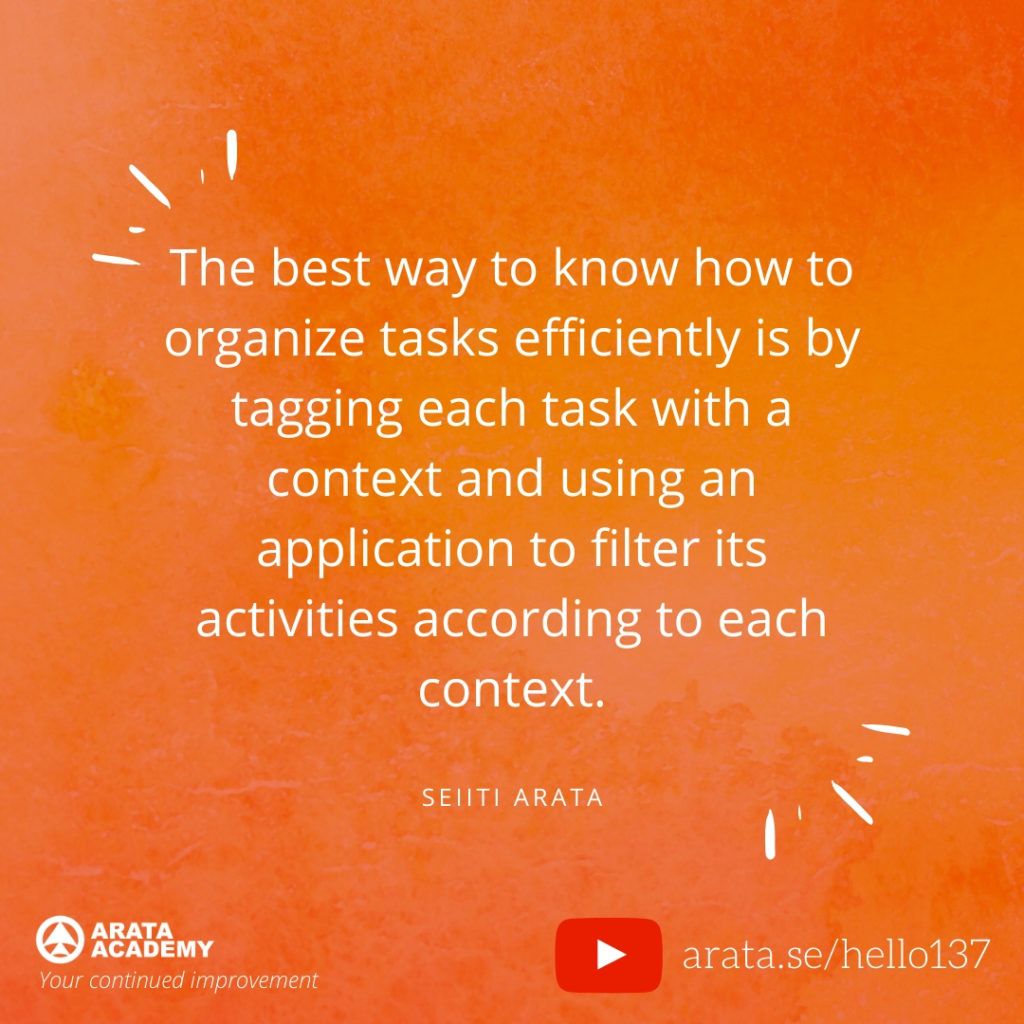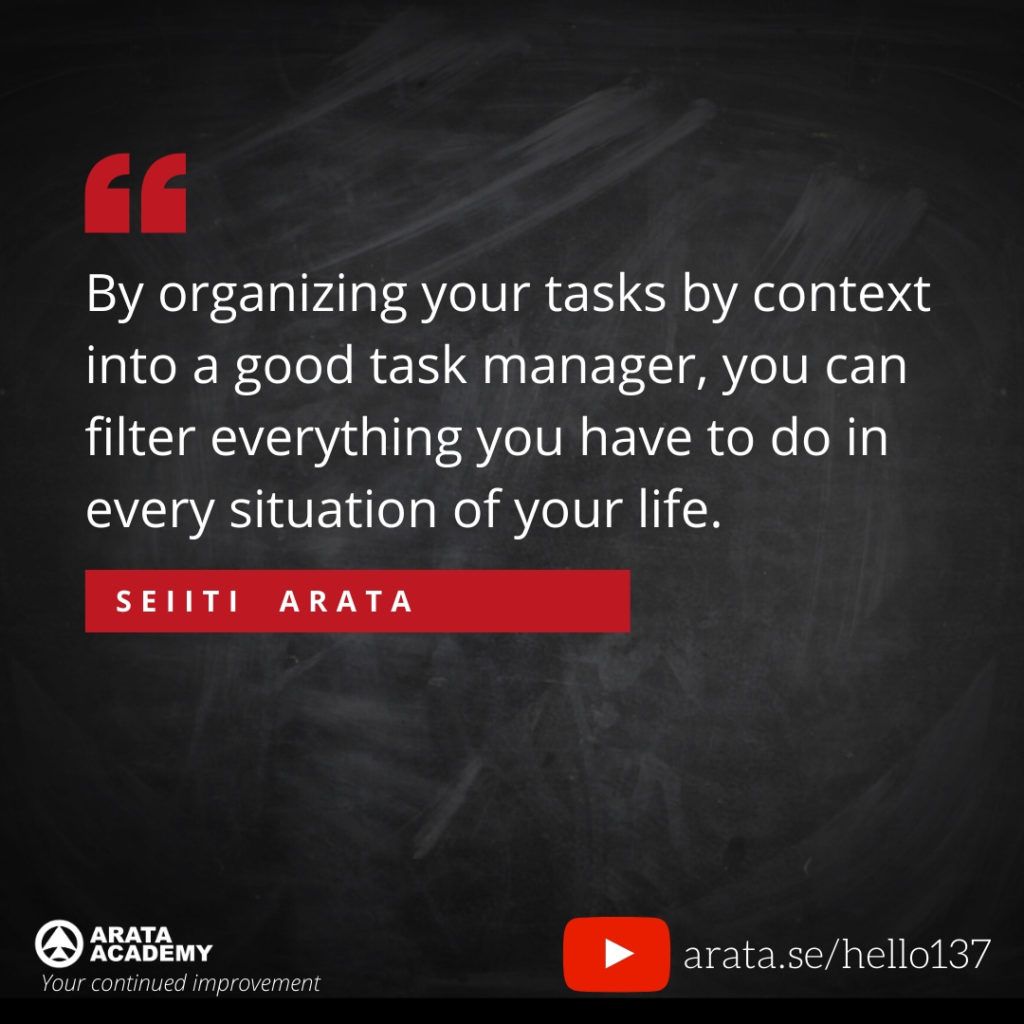Hello! Seiiti Arata. Have you tried creating a to-do list and after a while felt that your to-do list started to get messy? If this is your case, I want to give you a simple and very valuable tip to get you organized better.
First, let’s understand the source of this problem. If your to-do list got giant and messy, what is the reason?
It was certainly not unwillingness or lack of initiative. Just the fact that you take the action of listing your tasks shows that your intention was positive. First comes the excitement to create a list of all backlogs. You install some application or simply take pen and paper and start listing all the tasks you would like to do on the day. And then you tick one by one as you complete each activity.
This is a basic technique for task management. But it has a problem: the frustration of when the day is over or when your energy is over and there are still tasks to be done on the list. When you can’t finish everything, the tasks will accumulate and you will be left with a huge, unorganized list that no longer helps you.
The problem is lack of organization. There is a simple way to solve this problem. Just use contexts to organize your tasks.

Contexts clarify when you can do each task
In the basic way of writing a to-do list, the organization is date-based. You simply list the things you would like to do that day and start performing the tasks.
What is the criteria for choosing where to start? You need to read the full list of tasks and choose one of them. This is relatively simple when you have a short list with few to-do items.
However, when your list starts to get long, you will feel that you are wasting a lot of willpower. And willpower is a scarce resource that can be exhausted just by reading the items and choosing the order of priority.

So that you don’t get worn out looking at all the items on your long to-do list, it is best to separate tasks by context. This will bring greater organization to your life and it will be much easier to manage your backlog in an orderly manner.
In contextual organization, you don’t make a single general list of tasks for the day. Instead, make different task-specific lists for each of your goals and mark the tasks according to the context in which you find yourself.
For example, you can use the geographic location context: You mark the tasks you can do when you’re at home. Or at work. Or in a shopping mall.
You can use the amount of time available context by marking the tasks you can do when you have a lot of time available. Or a short time.
Another possibility is context depending on the people involved, marking the tasks you can perform in the company of a particular person. Or a certain group of people.
Be more productive by filtering your tasks by context
Organizing tasks by context is one of the main ideas in the classic productivity book Getting Things Done, the famous GTD. You should be able to see a different task list for each situation you are in.
For example, when you realize that you have a few available minutes while waiting in a queue, you can use to resolve quick issues that can be done with your phone.
Contexts can refer to places, time, people and even their availability of energy or motivation.
For example, when you are at home, you can filter the information to hide what tasks you could only do at the office. And when you’re at the office, it’s no use knowing which products to buy at the supermarket. The advantage of filtering by context is that you gain more relevance from information by becoming a more productive person.

You are queuing tasks within specific projects, always marking these tasks with the contexts in which they can be performed. So when you find yourself in a certain context, just check which tasks you can perform at that time and start performing those activities.
Use technology to take better advantage of contexts
Using pen and paper to mark the contexts of your to-do list is possible, but not very productive. In this analog mode, each time you are in a particular context, you would have to read all the tasks on paper to identify which activities could be performed in that context.
Therefore, it is ideal to use a task management application that somehow allows the use of contexts.
For example, suppose you have all your tasks recorded in such an application. All tasks are marked with the appropriate contexts.

Now imagine that you are in a mall. Opening the task manager on your phone, simply click on the “shopping” filter to list all the tasks you can perform there.
If you want a more advanced technique, you can also filter by combining two or more contexts to look at an even more refined task list.
For example, let’s say you’re at work and you’ve just been visited by a colleague named Alice.
You can open your task manager and have it filter tasks that contain the “work” and “Alice” contexts. This will allow you to quickly visualize the demands you can solve with Alice at work.
Contexts are often used as tags or labels in virtually all current task management applications. Some of these apps even have built-in GPS alarms on your smartphone to remind you exactly what to do once you get there.
Organizing tasks by context can change your life
If your to-do list is too large and you frown on pending issues that are irrelevant to the context you are in, spending the willpower to make unnecessary decisions, maybe it’s time to try a more productive way to manage your tasks. .
To create serious life planning you must include in a good task manager all your life goals. And it will break these goals into small tasks marked with the right contexts.
By doing so, you will quickly know how to manage tasks in a much more productive manner.
You will come to a place and, with a few clicks, know exactly what you have to do. And you can refine this to-do list by matching the place with the time you have available or the people around you.

Organizing tasks by context is a technique that brings a lot of productivity to your daily life, bringing you closer to your big life goals much faster and more efficiently.
Ideally, this technique should be applied alongside serious life planning that covers every area of your life and contains the actions necessary to make you who you really want to be.
If you want to know how to make such a planning, I invite you to attend a special Planning Your Life course class that shows you exactly how to get started and continue your life plan. You can view the class right now by visiting https://arata.se/planningyourlife

